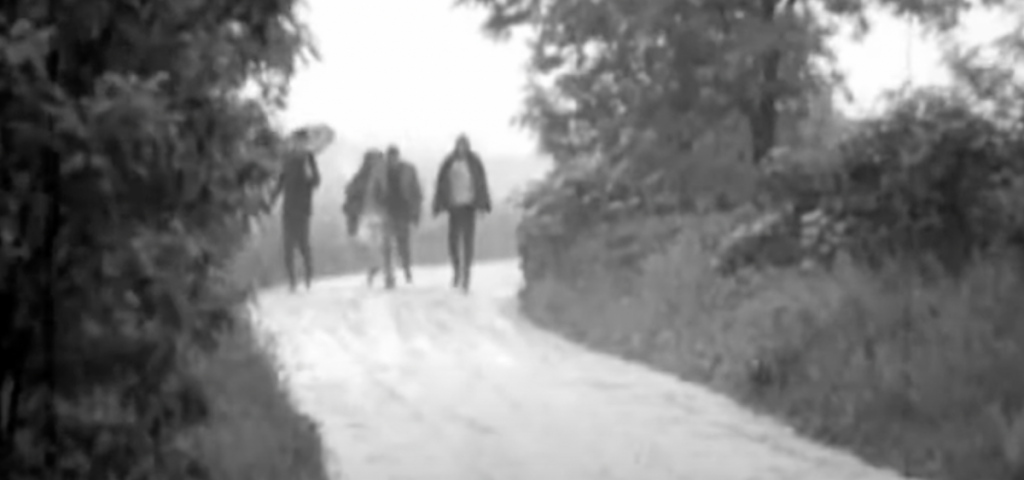The Striptease of War in Gaza
Two days ago, the anthropologist Talal Asad emailed me the video by Al Jazeera’s The Listening Post, ‘Genocide in Gaza through the eyes of Israeli soldiers’. It documented Israeli soldiers posting materials of the war through images circulated on social media. Asad is deeply affected by the war and it has disturbed his writing schedule.
Lisa Hajjar, professor of Sociology UC Santa Barbara, is among the three experts who comment on the images in The Listening Post video. Hajjar reads a particular sequence where rows of Palestinian men are stripped to their underwear and lined up in streets and parks, calling it “cruel, inhumane and degrading treatment” by Israeli soldiers who, she says, “lack specific intelligence about who might be actually Hamas, and because they lack intelligence, they therefore are rounding up everyone in order to– hope to– extract information through interrogation.”
Hajjar’s reading is not accurate. The Israelis may well claim they are rounding up Palestinian men to extract information about Hamas. The logic of that claim is duplicitous, and appears rather to be a clear excuse to humiliate and torture Palestinians. The war on Gaza is ostensibly against Hamas. All the men publicly stripped to their underwear are enemies and they deserve this humiliation irrespective of any corresponding war logic. Every Palestinian man is potentially Hamas, and any treatment against them is justified. This is not even a case of suspicion, but condemnation by association. To conduct mass humiliation in public is both war ritual and trial. This is an absolute act of cruelty without any corresponding justification. Mass humiliation is never a means to an end. It is an end in itself that has no end. It doesn’t matter that the Israeli soldiers hope to extract any information from the men they are torturing. What they do in the name of that logic, or explanation, exhausts the entire meaning of their act.
The other images of this nine minute video are also revealing. Soldiers ride bicycles belonging to children inside deserted homes reminding you how soldiers at war turn infantile. In a memorable scene from Werner Herzog’s 15-minute film made in 1967, The Unprecedented Defence of the Fortress Deutschkreutz, a young man mimics a soldier wearing a World War II army uniform in an abandoned building, as he gleefully chases a rat with a defunct gun. Even the mimicry of war is a reminder of its acute infantilism.

A still from Herzog's 'The Unprecedented Defence of the Fortress Deutschkreutz'.
There is an image among the Israeli videos that shows a soldier singing, “This house is on fire”, as the building before him is burning. In another image, a soldier plays a popular song as buildings are bombed. These are signs of overcoming the discomforts of destruction with a display of moral perversity. The war must not be what it is, a gory noise of habitation reduced to rubble. War must exhibit the images of popular culture. The nation must consume war on their phones and television during spare time. War must be music to the ears.
There is a violent image of a woman’s red lingerie displayed like a fetish object. Since war is deadening to the spirit, these objects are meant for arousal. A soldier wearing a bra on his chest is groped by another soldier sticking his tongue out. Another soldier makes his sleeping war-mate smell a woman’s underwear holding it over his gaping mouth. These images take Roland Barthes’ critical reading of the striptease to a bizarre level. The soldiers indulge in simulated acts of striptease in the absence of the object of desire. They cling on their fantasies by strip-teasing themselves. The pornographic acts betray the desperate need by these men to counter the sexless appetite of war. It includes doing violence to the body, but also to the image of the body. The psychological nature of all wars is to turn bodies into ghosts.
The soldiers move like ghosts in the buildings they occupy. A soldier robs watches from a house where time is dead. Bulldozing trees, bombing buildings, the soldiers destroy their own vitality. They will carry these images to their graves. The ruined life and property of the enemy will flow in their blood. The enemy always lives inside you, and destroys you as you destroy them.
The solemn irony of these images is that the looted objects alone – the watches, the bicycles, and the lingerie – move us with the fragile traces of life in them. It is missing in the grotesque smile of the soldiers. The bicycles won’t transport them back to childhood. The red lingerie won’t breathe in their arms. In their depraved attempt to possess what they display as war booties, the soldiers fail to match up to their fetish items. Violating intimate spaces of other people, the soldiers crush their own relationship with intimacy.
War is an anxious beast because even though it flattens and plunders, it can’t put an end to the infinite resilience of human vulnerability.
Yet, this vulnerability grapples for life as its world is taken apart, its ground taken away.
The spoils of war quivering with life are emptied of meaning because people who infused them with meaning are not around any longer. Things in the world have meaning when protected by life, be it home, garden, or the body. Stripping everything bare, the soldiers macabrely celebrate their bare life. Turning everything into nothing, they turn themselves into nothing.
Manash Firaq Bhattacharjee is the author of Nehru and the Spirit of India. He is working on a book on Gandhi.
This article went live on March twenty-ninth, two thousand twenty four, at zero minutes past five in the evening.The Wire is now on WhatsApp. Follow our channel for sharp analysis and opinions on the latest developments.




